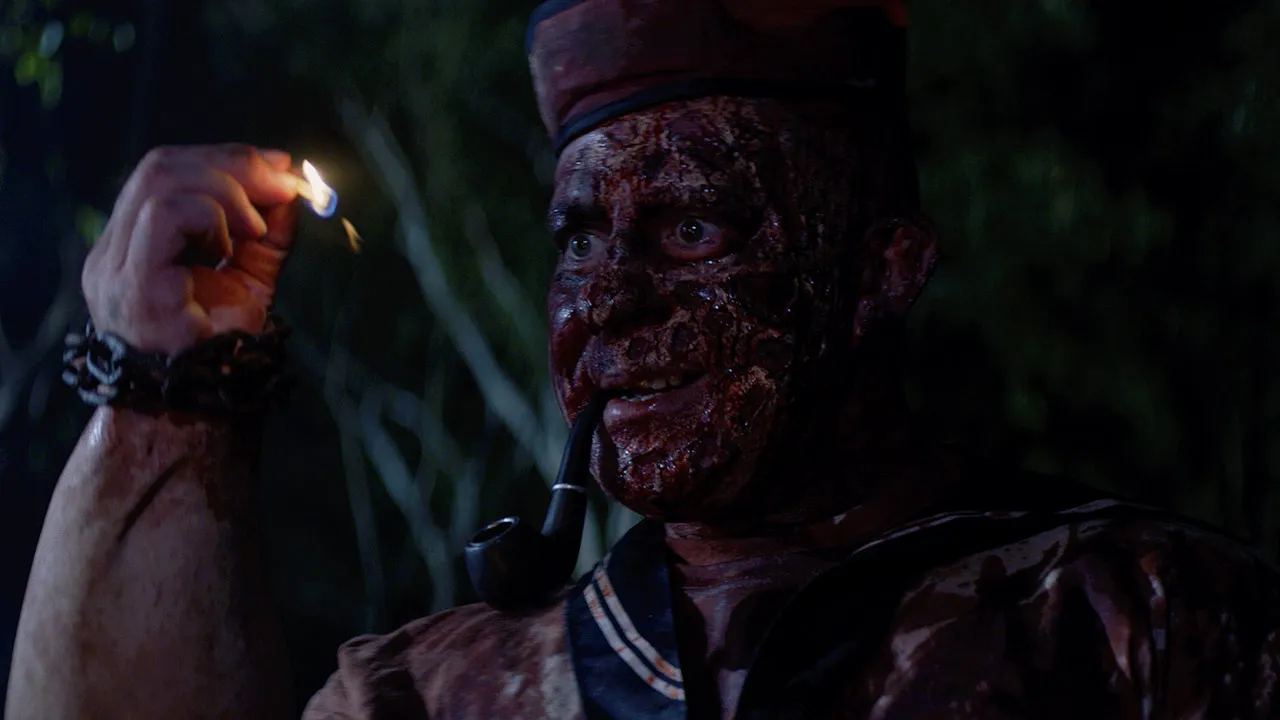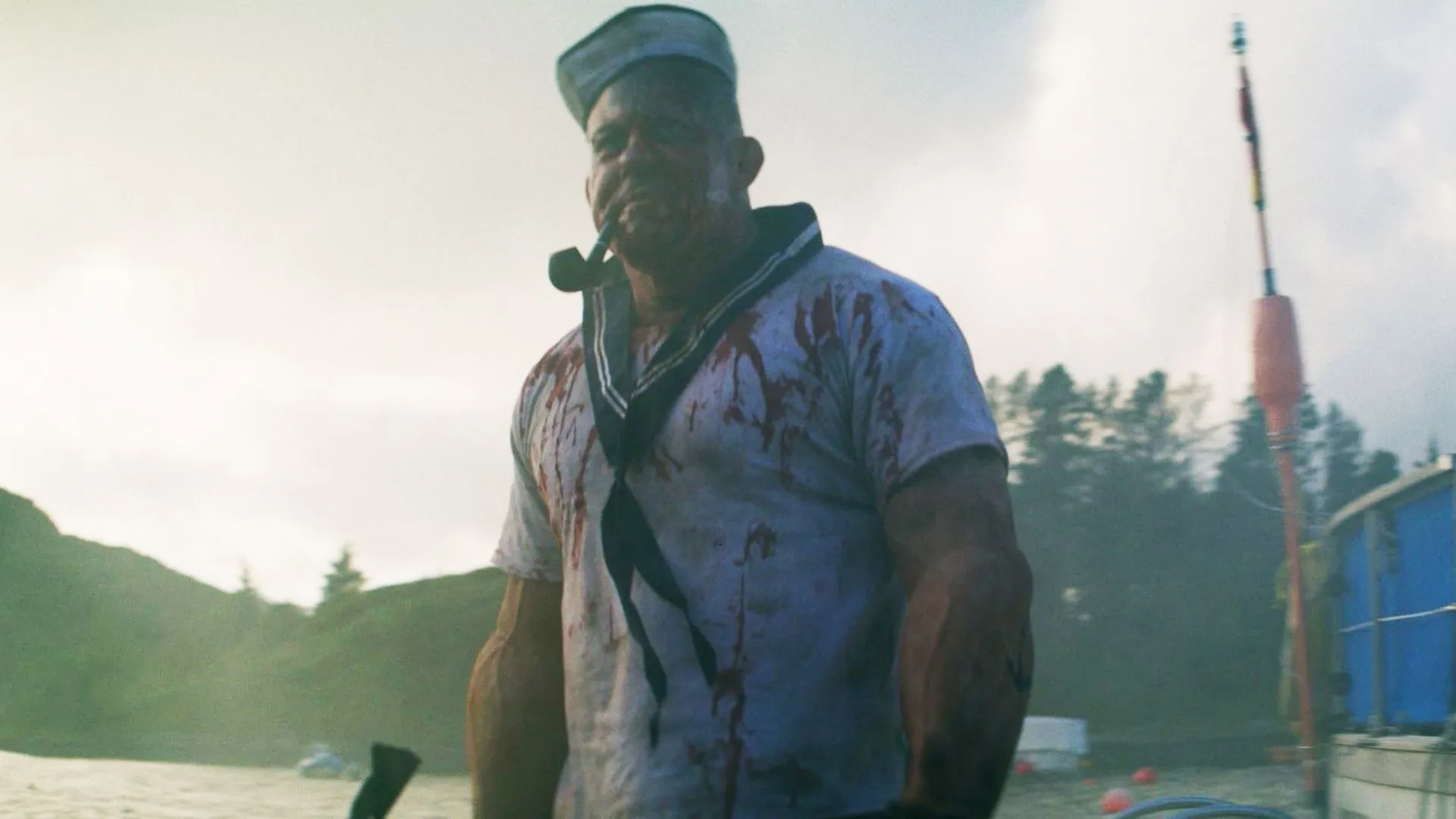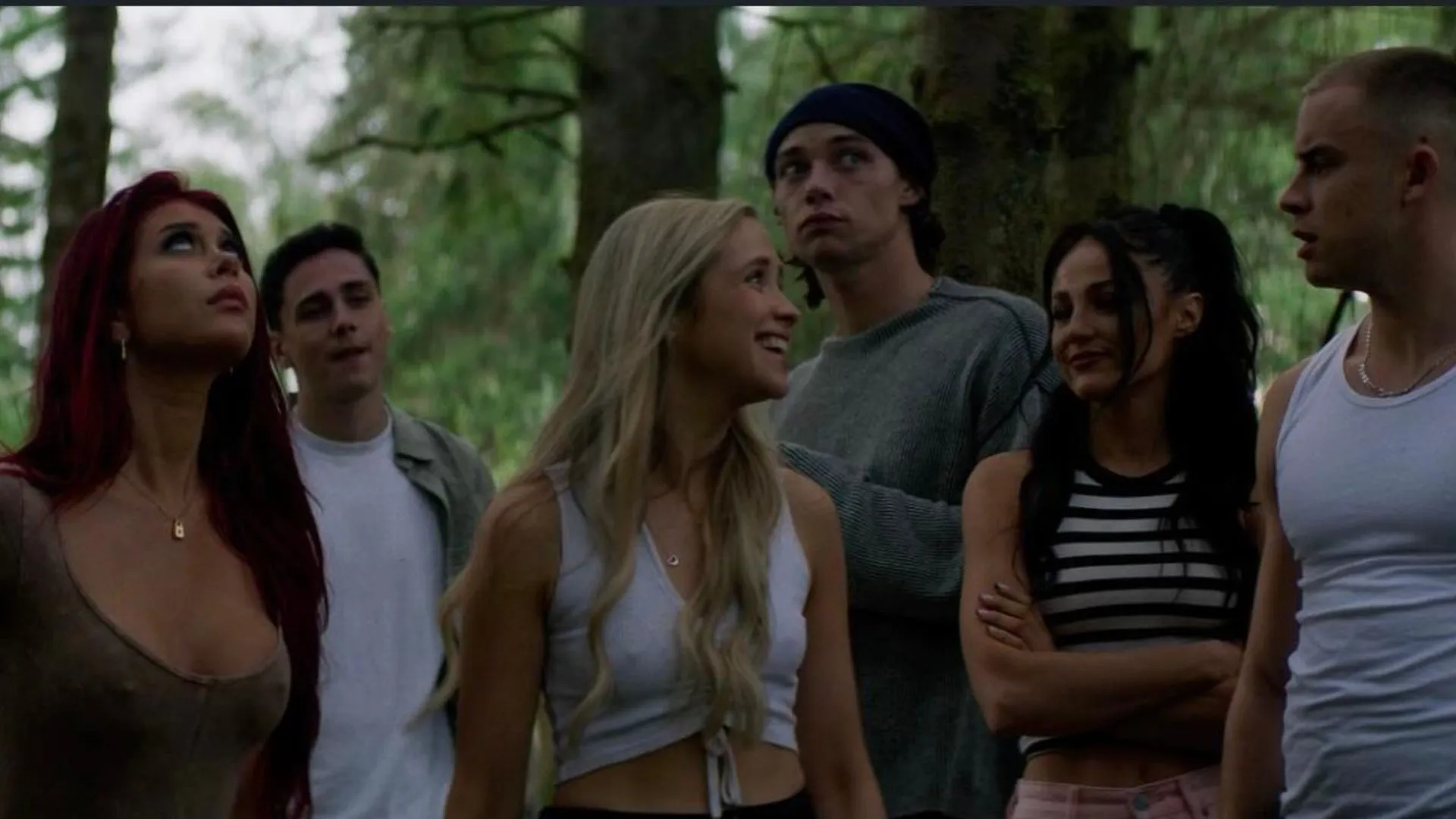“Popeye’s Revenge” reinvents a well-known figure from childhood cartoons into a figure that now serves as a menacing force in a film. The movie repurposes the classic sailor, replacing his friendly demeanor with a chilling new role marked by unexpected ferocity.
The narrative presents his past marked by isolation and tragedy, transforming these elements into a driver for his new, sinister actions. His trademark features take on unsettling significance, turning what was once a symbol of heroism into an embodiment of terror.
In today’s wave of films that repurpose established characters for shock value, this work stands as one example of repackaging familiar elements to create a darker experience.
It marries the typical cues of horror—sudden apparitions, eerie settings, and carefully timed violence—with the unexpected presence of an icon everyone thought they knew. The film interweaves classic slasher setups with hints of spectral mystery, adding a new dimension to its narrative.
The tone vacillates between tongue-in-cheek moments and relentless shock. Fans of the genre will recognize hints of old school horror, while newcomers might appreciate the surprising redefinition of a childhood figure. One might ask: can reinterpreting a beloved character in such a stark light spark fresh conversations about legacy and fear?
Plot and Storyline: A Haunted Past and an Uncertain Return
The film opens by chronicling the troubled youth of Popeye, emphasizing his distinctive physical traits that set him apart. Bullied at school, he reaches a critical moment that leads him to commit a grave act against a classmate.
His parents, desperate to shield him from a harsh society, remove him from the public eye. In isolation, he receives mysterious messages delivered through a hidden slot in the basement door, adding a layer of enigma. This sequence reaches its peak when an enraged crowd overruns his home, setting it aflame and leaving deep emotional scars on the young boy.
The narrative shifts when Popeye is presumed lost in a fog-enshrouded lake. Instead of disappearing, he reappears marked by an eerie supernatural quality.
The film leaves the details of his return ambiguous, prompting viewers to consider the unseen forces that might have reshaped his destiny. His new existence as a figure of unyielding retribution is painted with both a sense of raw terror and a lingering melancholy, raising questions about the cost of his transformation.
In later chapters, a group of young adults investigates the rebuilt house, a site steeped in the legend of Popeye. Among the group, Tara emerges with a plan to repurpose the property into a venue for spine-chilling attractions.
Her aspirations clash with the unpredictable presence of a being whose past is soaked in pain and fury, setting the stage for a series of unsettling encounters that blur the lines between myth and reality.
Certain details remain unexplained, such as the continued use of the sailor costume and the ambiguous significance of a heavy anchor.
References to elements like spinach appear to stray from the central narrative, prompting viewers to question the decisions behind these inclusions. These narrative choices inject unexpected turns into the storyline, leaving open questions that linger in the mind long after the credits roll.
Characters: The Evolution of Icons
Popeye steps away from his familiar role as a cheerful sailor and appears as a figure marked by vengeance. His visual design—huge muscular arms, the sailor uniform that now seems almost like a shroud, and a weighty anchor that hints at untold stories—forms a visual narrative of its own.
His appearance, once meant to inspire confidence, now gives off an unsettling air that makes his actions seem both unexpected and grim.
Olive is reimagined to serve as a counterpart in this darker tale. Her presence carries an air of mystery that complements Popeye’s silent menace.
The group of young adults, including Tara, Dylan, Nick, Kathy, Max, and Donna, functions as a moving canvas against which Popeye’s eerie evolution is cast.
Each character, though not fully fleshed out, contributes moments that suggest potential for deeper connections. Tara, for example, occasionally hints at a personal link to the tragic past, making her more than just a bystander in a chaotic plot.
While the script often leaves these roles without the full depth they might deserve, there are flashes of strong performance where emotion cracks through the sparse dialogue.
These instances indicate that with more development, the ensemble could have provided a richer counterpoint to Popeye’s transformation. One might wonder if more attention to these individual arcs would have offered a more resonant interplay between character and story.
Visual Style, Cinematography, and Special Effects
The film uses elements such as a thick haze and careful lighting to craft a mood that supports its eerie backdrop. Scenes in the abandoned house and the misty lake create a sense of isolation that reinforces the unsettling nature of the tale. The director works with modest means to achieve visual impact, turning limited resources into distinct atmospheric details.
In the gore sequences, practical effects stand out with scenes that combine raw physicality and explicit bloodshed. Some moments display inventive use of makeup and on-set effects that evoke strong emotional reactions, even if certain computer-generated shots fall short. The tangible quality of the wounds and splattered gore offers a sensory experience that enhances the film’s emotional drive.
Production design reinterprets familiar cartoon imagery by transforming the sailor uniform into a symbol with dark connotations and reworking classic animation cues with a menacing twist.
The anchor, a recurring prop, strengthens the film’s ambiance while hinting at mysterious backstories. These visual choices add a curious appeal but sometimes create narrative disjunction, leaving viewers to question how these elements intertwine with the storyline.
This careful arrangement of shadowy settings, practical gore effects, and reimagined iconography invites consideration of how visual storytelling can support a film’s narrative structure even when certain choices introduce ambiguity.
The film’s design decisions provoke thought about the balance between nostalgic references and the demands of crafting a memorable, emotionally charged cinematic experience.
Rhythms of Reprisal
William Stead’s direction transforms a once-beloved icon into a figure steeped in terror. He takes a familiar public domain character and remolds him into a menacing presence that unsettles the viewer at every turn.
The film’s direction employs deliberate pacing, where moments of quiet tension gradually build before unleashing sudden bursts of graphic violence.
Some segments draw the viewer in with a slow, creeping dread, only for abrupt scenes to disrupt the calm with startling shocks. This pattern creates an uneven rhythm that oscillates between measured suspense and unpredictable brutality.
The structure benefits from scenes that build anticipation, allowing the horror to strike with greater impact when the pacing shifts. Yet, certain sequences feel rushed, leaving pivotal moments underexplored.
At times, the film mirrors classic slasher techniques with familiar set pieces and a nod to long-established horror traditions. Other segments experiment with fresh timing and unexpected transitions, resulting in clashes that offer both meticulously planned tension and disjointed sequences.
The outcome is a cinematic experience that raises questions about how tone and pace interact to shape viewer response. Every shift in rhythm challenges the audience to reconsider what triggers the fear response, leaving the experience both unsettling and thought-provoking.
Cultural Shadows and Horror Roots
The film uses familiar cues from movies like Friday the 13th, A Nightmare on Elm Street, and The Fog. It features sudden violence, heavy fog, and intense suspense that form part of the classic slasher formula.
These elements shape the film’s tone and guide its visual storytelling, though at times they produce moments that feel disconnected from the rest of the narrative.
Transforming a cheerful cartoon sailor into a figure driven by anger creates an unexpected twist that challenges audience expectations.
This shift forces a reexamination of old memories, as the character is recast into something far removed from his original, lighthearted role. The contrast between the once-innocent past and the current grim persona offers a striking visual and emotional counterpoint.
The narrative touches on the impact of mistreatment and isolation, suggesting that early experiences of bullying can spark a cycle of pain and retribution. This perspective invites viewers to reflect on how personal exclusion may shape behavior over time.
The film emphasizes that even small, personal hardships can have significant repercussions. Scenes that capture isolation in stark, barren settings remind us that internal struggles may manifest as external turmoil, leaving open questions about the true cost of social rejection.
Final Thoughts and Impact
The film impresses with inventive kill scenes and mood-rich visuals that transform familiar imagery into something startling. Its portrayal of a well-known icon turned vengeful figure sparks genuine reactions, and select moments of unexpected humor bring relief amid tension.
Each graphic sequence and eerie setting serves a purpose in shaping the viewer’s experience, hinting at possibilities for a dedicated fanbase that appreciates daring reinterpretations.
Certain narrative decisions leave questions lingering. The plot sometimes appears disjointed, with key character details and background elements feeling underexplored.
Specific choices regarding the source material occasionally stray from what might have been a more coherent story, leaving gaps that detract from the overall clarity. This uneven execution affects how smoothly the story unfolds and may challenge those seeking a tightly woven narrative.
The film occupies a distinct position within the public domain horror subgenre. Its mix of chilling visuals and a surprising twist on a cherished character invites viewers who favor creative risks and unconventional storytelling.
Fans drawn to experimental approaches in horror and those who appreciate bold narrative shifts may find this work thought-provoking. How might future films refine these ideas to better harmonize story and spectacle?
The Review
Popeye's Revenge
Reworking a familiar icon into a ruthless force, this film delivers memorable visuals and inventive kill scenes while leaving gaps in its storytelling. Its atmospheric approach and daring reinterpretation provide moments that captivate fans of offbeat horror. However, the loose narrative and missed opportunities with the source material prevent it from achieving a more cohesive experience. The film will likely appeal to viewers who favor experimental takes on classic characters.
PROS
- Inventive reinterpretation of a classic figure
- Striking atmospheric visuals and effective gore sequences
CONS
- Fragmented narrative with uneven pacing
- Underdeveloped plot and character arcs
- Inconsistent execution between practical and CGI effects
- Missed opportunities with familiar source elements
- Disjointed storytelling that may confuse viewers





















































